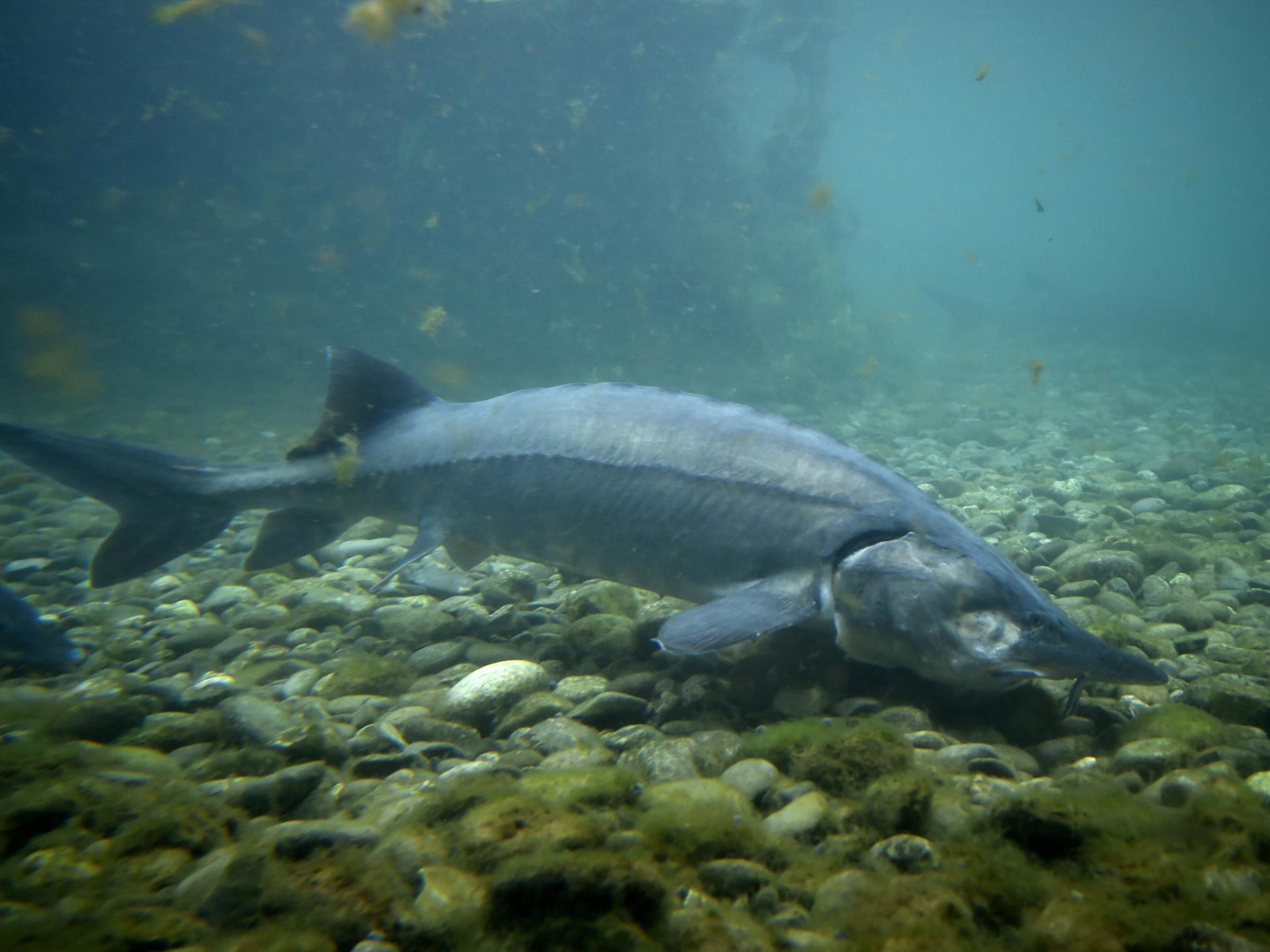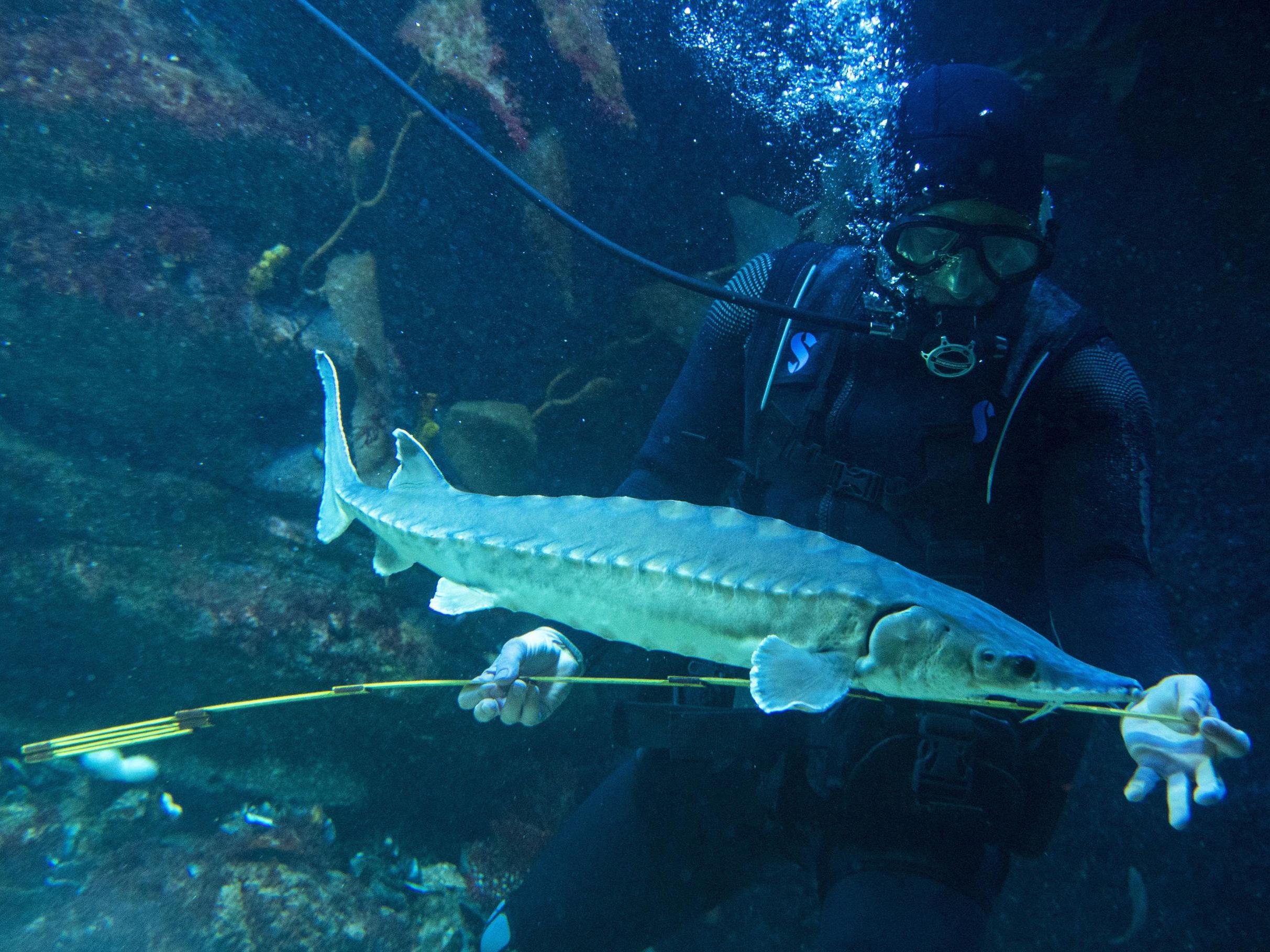'Forgotten dinosaurs’ returning from edge of extinction after sightings in US rivers
This could be the 'comeback generation' of the species, scientists say

Your support helps us to tell the story
From reproductive rights to climate change to Big Tech, The Independent is on the ground when the story is developing. Whether it's investigating the financials of Elon Musk's pro-Trump PAC or producing our latest documentary, 'The A Word', which shines a light on the American women fighting for reproductive rights, we know how important it is to parse out the facts from the messaging.
At such a critical moment in US history, we need reporters on the ground. Your donation allows us to keep sending journalists to speak to both sides of the story.
The Independent is trusted by Americans across the entire political spectrum. And unlike many other quality news outlets, we choose not to lock Americans out of our reporting and analysis with paywalls. We believe quality journalism should be available to everyone, paid for by those who can afford it.
Your support makes all the difference.They once owned rivers up and down America, needing nothing more than their age-old birth certificate to embolden their presence.
With an evolution that can be traced back some colossal 245 million years, the Sturgeon fish is among the longest-living in the dinosaur family.
In recent years, however, the giant-bottomed and armour-plated fish have become known as the 'vanishing dinosaur', as damaging industrial human practices took hold from the 1800s onwards and gradually toxified an environment home to them long before us.
But now the tides are changing, as increased numbers are appearing in the cold streams of Maine, the lakes of Michigan and Wisconsin and the coffee-coloured waters of Florida's Suwannee River.
Scientists have been finding sturgeon in places where they were thought to be long gone. And they're seeing increased numbers of them in some rivers because of cleaner water, dam removals and fishing bans.
"It's really been a dramatic reversal of fortune," said Greg Garman, a Virginia Commonwealth University ecologist who studies Atlantic sturgeon in Virginia's James River. "We didn't think they were there, frankly. Now, they're almost every place we're looking."
A sign of the revival, a 14-foot Atlantic sturgeon — as long as a Volkswagen Beetle — was recently spotted in New York's Hudson River.
While these discoveries provide some hope for a fish that is among the world's most threatened, the U.S. sturgeon population is just a tiny fraction of what it once was — and the health of each species and regional populations vary widely.
It was following the late 1800s caviar rush that America's sturgeon species and subspecies became plagued by pollution, dams and overfishing, seeing a gradual steep decline - especially apparent in the 1990s - of a living creature that long outlasts harmful human activity.
"However, in the past three decades, sturgeon have been among the most studied species in North America as a result of their threatened or endangered status," said James Crossman, president of The North American Sturgeon and Paddlefish Society, a conservation group.
Some white sturgeon populations on the Pacific Coast are abundant enough to support limited recreational and commercial fishing, but Alabama sturgeon are so rare that none have been caught for years.

Across America, dams still keep some sturgeon populations low by blocking ancient spawning routes, and among the modern dangers the fish face are rising water temperatures from climate change and the sharp propellers of cargo ships.
The challenge remains steep and it will take decades to measure a population's recovery, experts say, with sturgeon sometimes living longer than humans. And they spawn infrequently, often requiring half a century to bounce back from overfishing.
Environmentalists, keen for the bounce-back not to buckle, warn that more attention to conservation efforts is needed.
"They've survived relatively unchanged for 200 million years," said Jeff Miller, at the Center for Biological Diversity, which is planning a lawsuit seeking federal safeguards for sturgeon in the Great Lakes and Mississippi River watersheds. "If they're going to survive us, they're going to need additional protection."
Sturgeon swam with the dinosaurs, bony plates line their bodies, whisker-like barbels hang from their chins, and their toothless mouths telescope out and vacuum up anything from worms to mussels.
Their meat fed Native Americans, the starving settlers of Jamestown and the Lewis and Clark expedition. Delaware River shad fishermen would yank up their nets as thousands of sturgeons swam towards spawning grounds.
Then came caviar. The Russian delicacy of salt-cured sturgeon eggs became a fad for Europe's new middle class —and that took a heavy toll on American sturgeon.
"People just massacred them, just like we massacred the buffalo," said Inga Saffron, author of the 2002 history "Caviar."
"The difference being they were catching the sturgeon as they were migrating to spawn," she said. "Not only did they kill the fish, they killed future generations of fish."
By 1900, American sturgeon populations were collapsing, dams were going up and pollution sucked oxygen from rivers.
But as decades passed, fishing bans took effect, and environmental laws became stronger.
Among the species showing improvement is Atlantic sturgeon, whose range stretches from Florida to eastern Canada.
The population around the Chesapeake Bay was feared to be extinct in the mid-1990s but now thousands are believed to be there, according to Virginia Commonwealth University scientists.
Last fall, Matthew Balazik, a sturgeon research ecologist with the university and the U.S. Army Corps of Engineers, netted more than 200 baby Atlantic sturgeon in the James River — the first seen there in years. "This could be a kind of a comeback generation," Balazik said.
While not every river is seeing improvement, overall Atlantic sturgeon appear to be slowly recovering after a species-wide fishing moratorium went into effect in 1998, according to Atlantic States Marine Fisheries Commission analysis.
The shortnose sturgeon also shows signs of bouncing back, with the population nearly doubling from about 5,100 in the late 1970s to more than 9,400 around 2000 in Maine's Kennebec River - and likely, researchers say, still rising.
Wippelhauser credits cleaner water: "They used to just dump sewage into the river. There were paper mills that used to dump chemicals in."
Lake sturgeon are waging a slow but steady comeback, benefiting from fishing limits and stocking programs, some by Native American tribes. But dam construction over more than a century has slowed the recovery.
One solution has been a fish elevator and tanks that haul them around two hydroelectric dams on the Menominee River, which flows between Wisconsin and Michigan's Upper Peninsula.
The species still faces various threats including the Gulf Coast's ever-warmer waters, said Adam Kaeser, an aquatic ecologist with the U.S. Fish and Wildlife Service.
Decimated by dams, only one Alabama sturgeon has been caught since 2007, but DNA tests of river water confirm some are still there.
"They're hanging on," said biologist Steve Rider with the Alabama Department of Conservation and Natural Resources. "But they're barely hanging on."
Additional reporting by Patrick Whittle and John Flesher of AP
Join our commenting forum
Join thought-provoking conversations, follow other Independent readers and see their replies
Comments